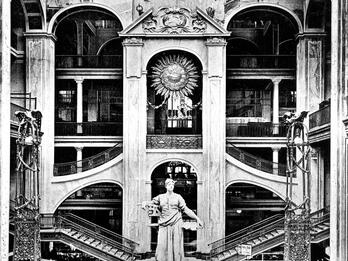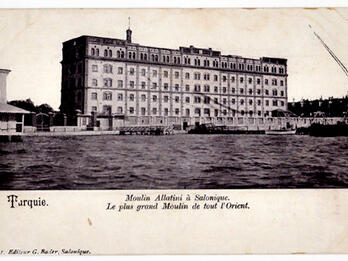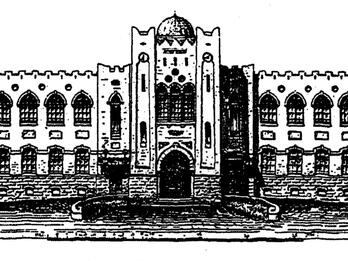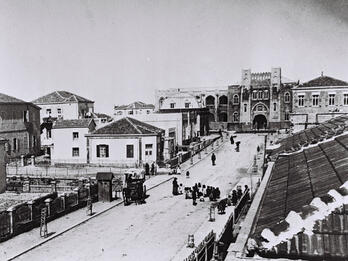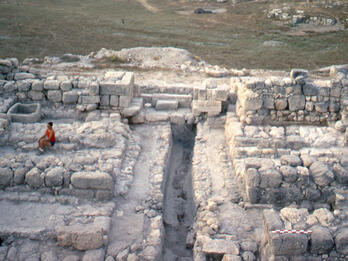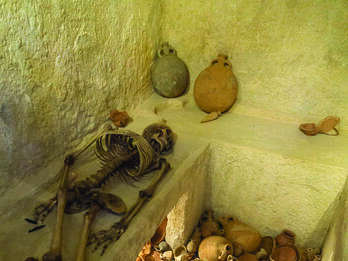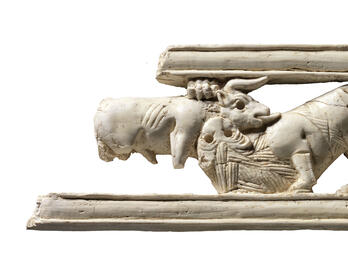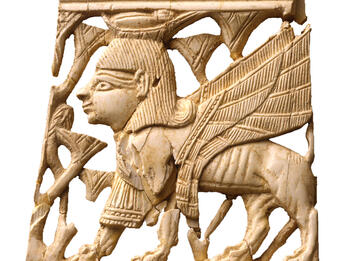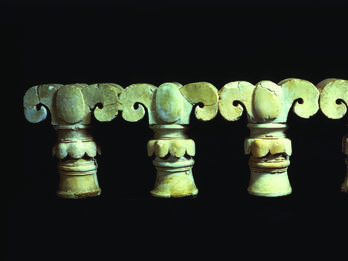Showing Results 21 - 30 of 150
Public Access
Image
The façade of the massive Warenhaus Wertheim had rows of narrow pillars extending from the ground floor to the roof and was a showpiece of early twentieth-century Berlin. The interior looked more like…
Contributor:
Alfred Messel
Places:
Berlin, Germany
Date:
1897
Subjects:
Categories:
Public Access
Image
When the Allatini Mills building was built in 1898, it was considered the largest industrial building in the “Orient” (then the catch-all term for the non-European world east of Europe). The first…
Contributor:
Vitaliano Poselli
Places:
Salonica, Ottoman Empire (Thessaloniki, Greece)
Date:
ca. 1900–1912
Subjects:
Categories:
Public Access
Image
Joseph Barsky’s design for the Herzliya Gymnasium, established in 1905 as the first Hebrew high school in Palestine, was adapted from Charles Chipiez’s and Georges Perrot’s understanding of…
Contributor:
Joseph Barsky
Places:
Jerusalem, Ottoman Palestine (Jerusalem, Israel)
Date:
1909
Subjects:
Categories:
Public Access
Image
In 1906, the Ahuzat Bayit (homestead) society was created in Jaffa by members of the Yishuv (the Jewish community of Palestine) as a planned “Hebrew” community, designed in accordance with the latest…
Places:
Tel Aviv, Ottoman Palestine (Tel Aviv, Israel)
Date:
1910
Subjects:
Categories:
Public Access
Image
The Church of St. Elizabeth, located in Bratislava (today in Slovakia), was designed by Ödön Lechner in the Hungarian Secession (art nouveau) style. It is called the Blue Church because of its blue…
Contributor:
Ödön Lechner
Places:
Bratislava, Austro-Hungarian Empire (Bratislava, Slovakia)
Date:
1913
Subjects:
Categories:
Restricted
Image
City gate, Gezer, Early Iron Age (1200–980 BCE). This gatehouse complex had benches for participants in legal procedures and other public affairs. In the book of Ruth, Boaz goes to the city gate in…
Places:
Gezer, Land of Israel (Tel Gezer, Israel)
Date:
Early Iron Age
Subjects:
Categories:
Restricted
Image
Shown here is a reconstructed burial chamber from Ketef Hinnom, on exhibit at the Israel Museum. There are ledges along the side and back walls, with low parapets visible along two of the ledges. A…
Places:
Ketef Hinnom, Land of Israel (Jerusalem, Israel)
Date:
Iron Age IIC–Early Persian Period, 7th–5th Century BCE
Subjects:
Categories:
Restricted
Image
The battle between a wild bull and a lion, which are among the most powerful animals, is a common theme in ancient Near Eastern art. In this panel from Samaria, the lion’s claws are embedded in the…
Places:
Samaria, Land of Israel (Samaria, Israel)
Date:
Iron Age IIA–IIB, 9th–8th Century BCE
Subjects:
Categories:
Restricted
Image
Sphinxes are among the most ubiquitous images on Iron Age Levantine ivories. The sphinx combines the features of several animals; it has the head of a human, the wings of an eagle, and the body of a…
Places:
Samaria, Land of Israel (Samaria, Israel)
Date:
Iron Age IIA–IIB, 9th–8th Century BCE
Subjects:
Categories:
Restricted
Image
Palm imagery is a common motif in decorative architectural elements like window balustrades. Each of the four columns in this partial restoration from the biblical period is six inches in diameter and…
Places:
Ramat Rahel, Land of Israel (Ramat Rahel, Israel)
Date:
Iron Age II, Late 8th–Early 7th Century BCE


